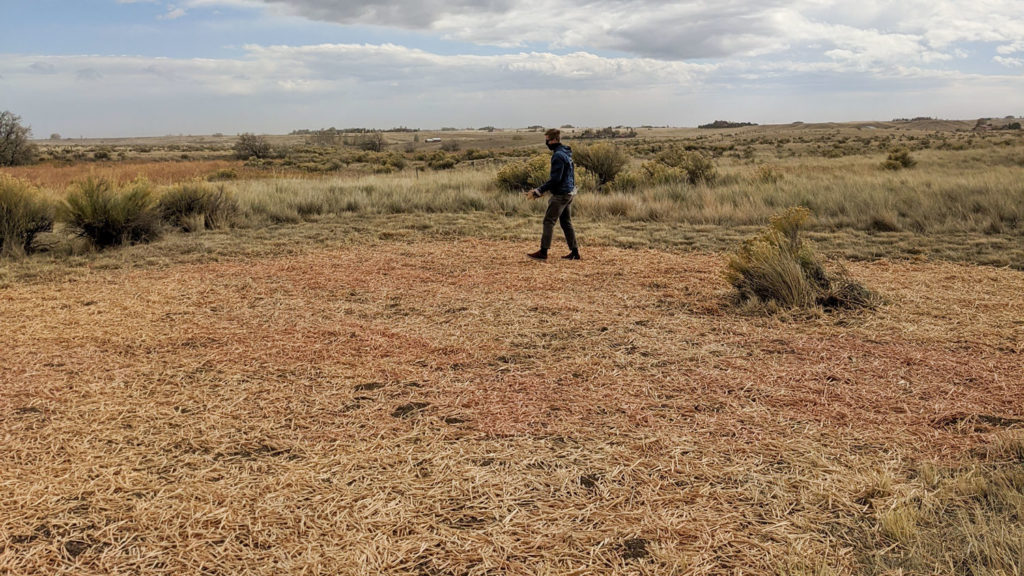
The Society for Ecological Restoration (SER) student organization is taking 2020 in stride. Ecological restoration is about improving the situation you’re given, so finding ways to complete a project in less than ideal conditions is the norm for these land stewards.
This group of Colorado State University students are learning and practicing how to restore essential processes and aesthetics to natural areas damaged or deteriorated by human use. While adhering to CSU event policies and best practices in place to limit the pandemic’s spread, SER student members were still able to plant and monitor new pollinator gardens on campus and in the Fort Collins community this fall. SER Student President Ryan Lawrence said the initiative helped this group of undergraduate and graduate stewards connect while still getting their hands dirty.
“There aren’t a lot of ways to meet and socialize right now,” Lawrence, a Forest and Rangeland Stewardship (FRS) master’s student, explained. “This gave us an opportunity to offer an outdoor field project that was safe, and get students involved who are just coming into natural resources.”
The idea began in Spring 2019, when members of the organization planted their first pollinator garden on a small patch of ground just outside the west entrance of the Michael Smith Natural Resources building on campus. This past spring and into the fall, current students talked about taking the next step by creating pollinator homes.
“We acquired small tree cookies (cross-sections of small tree trunks) and drilled holes in them as nesting sites for native bees,” Lawrence said. “We had a lot of them, but didn’t have a place with enough flowers to support the bees, so we needed to find additional space.”
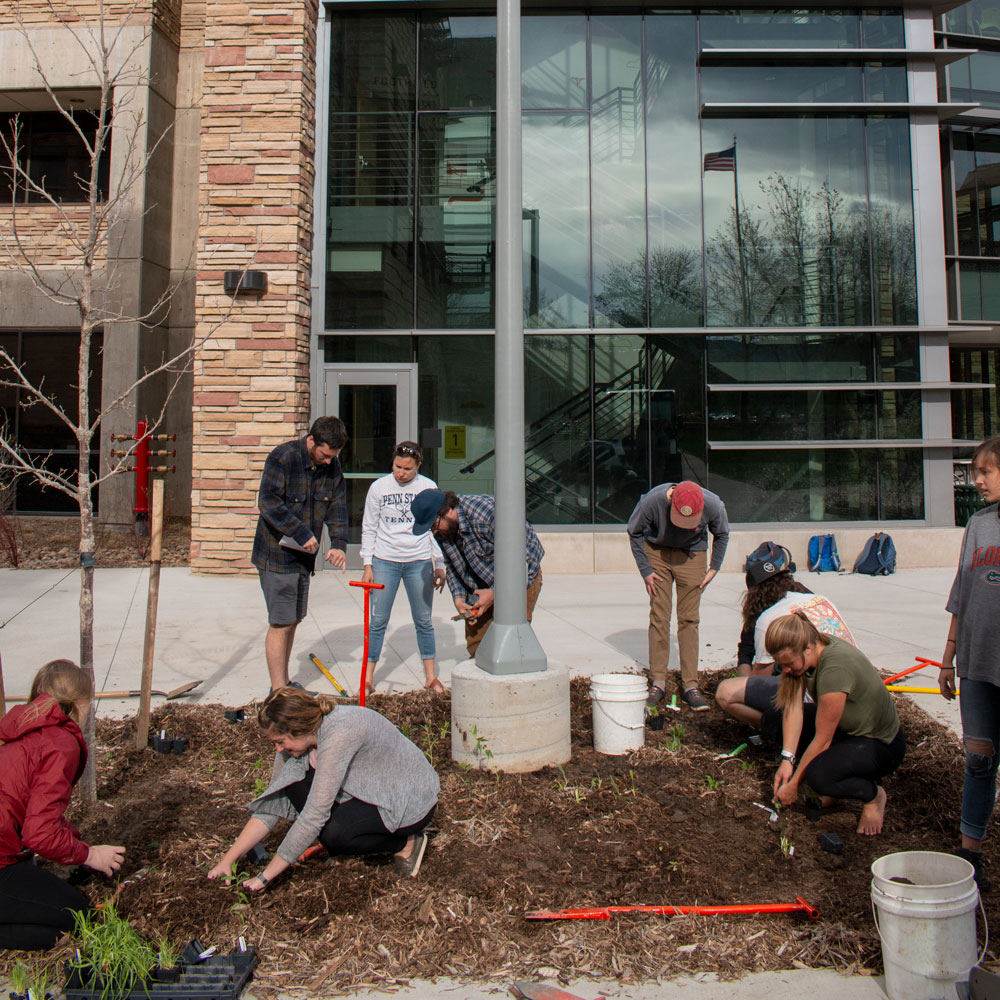
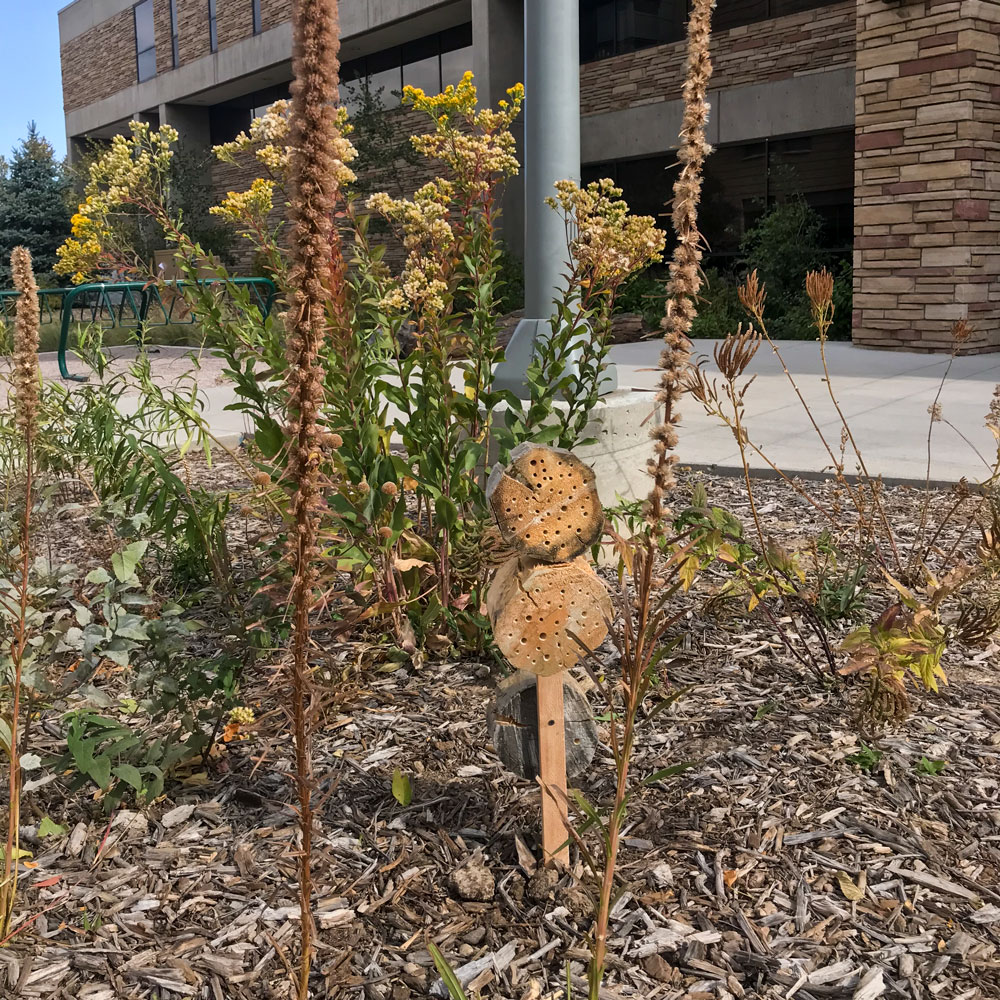
Over the past few years, Lawrence has been conducting field research at CSU’s 300-acre Waverly rangeland property, ten miles north of campus. Lawrence’s own project is researching how to create a reservoir of seeds from native species in the soil that may prevent invasive cheatgrass from establishing after a disturbance clears out existing vegetation. These native disturbance-adapted species might also help other kinds of native plants establish later. The FRS department manages the Waverly property, so he said the SER club saw an opportunity to move beyond just restoring native plants to also restoring native insect communities.
The method for creating the pollinator garden was a different kind of SER experiment. Instead of planting the garden in one field session as the organization normally would, SER officers divided up the rototilling, seeding and mulching tasks for members across a full weekend in mid-October. This way they wouldn’t exceed the 10-person maximum for student events, but still work together in smaller groups to get native seeds across the disturbed ground before winter sets in.
Mother Nature decided to throw another wrench into the project. The day the students scattered seeds and mulch across their garden, strong winds from the west blew smoke from Colorado’s largest wildfire across the site, making for difficult planting conditions.
“The seeds may end up on one side of the property” Lawrence said. “But we’re excited to see what comes out next spring and if our bee boxes are occupied.”
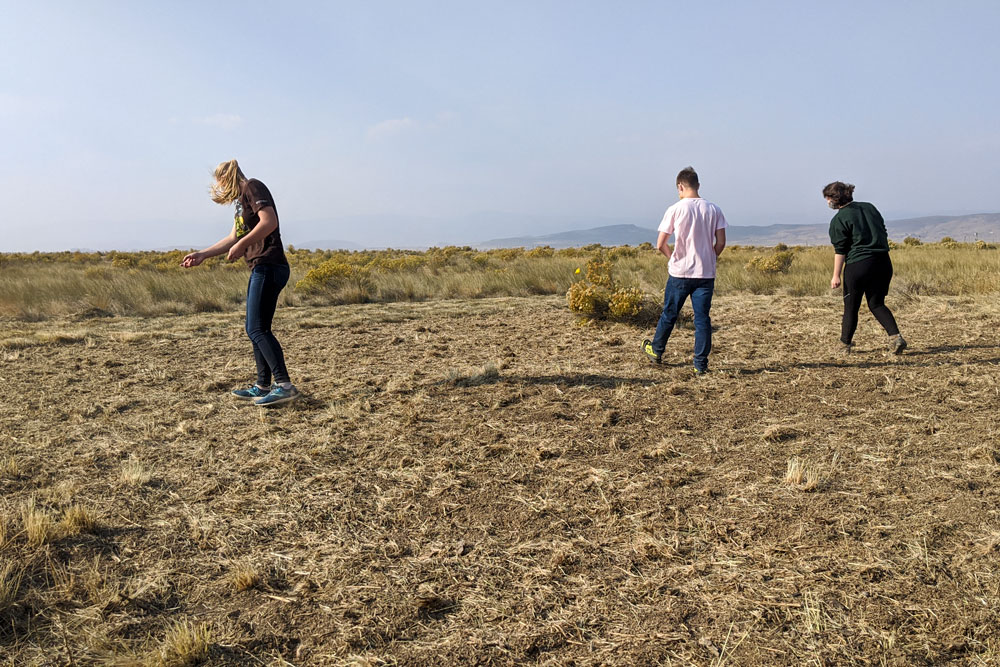
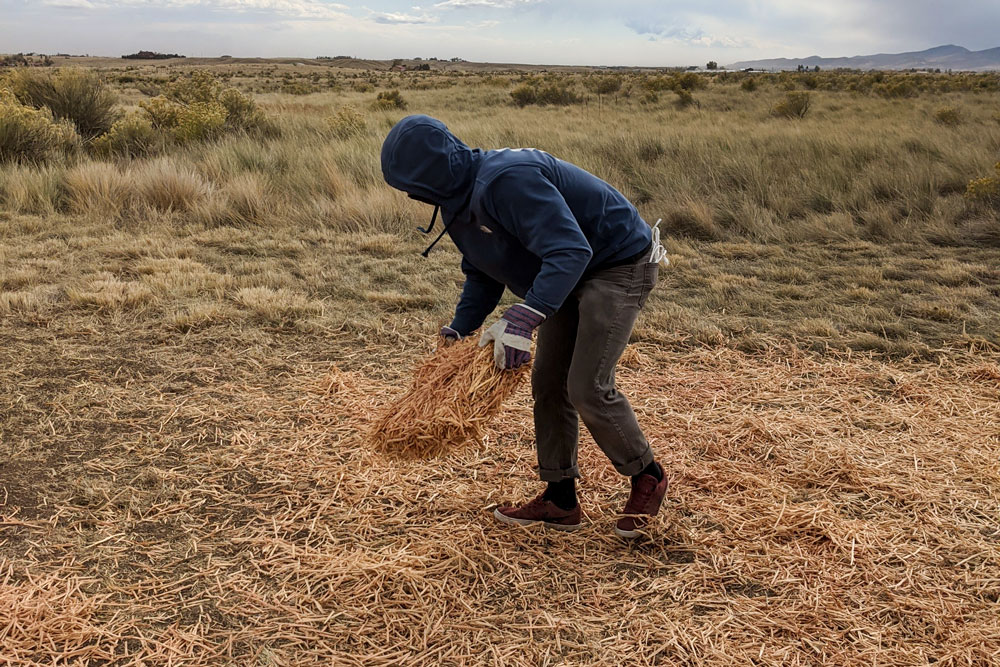
Brooke Simmons began the Master of Natural Resource Stewardship (MNRS) program this fall, but initially became involved with the SER student organization as a CSU employee at the beginning of the year. She led the effort to assess the campus pollinator garden a week after the Waverly seeding activity. It just happened to be on another extremely windy day.
“Even if it’s windy and smoky, the students are that dedicated and still show up to do the work,” Simmons said. “It didn’t go quite the way we planned, but we learned to be resourceful and construct the bee boxes so they would remain standing.”
After placing the bee boxes at the site, the SER students identified the plants that survived over the past year and recorded new ones they will need to plant next spring.
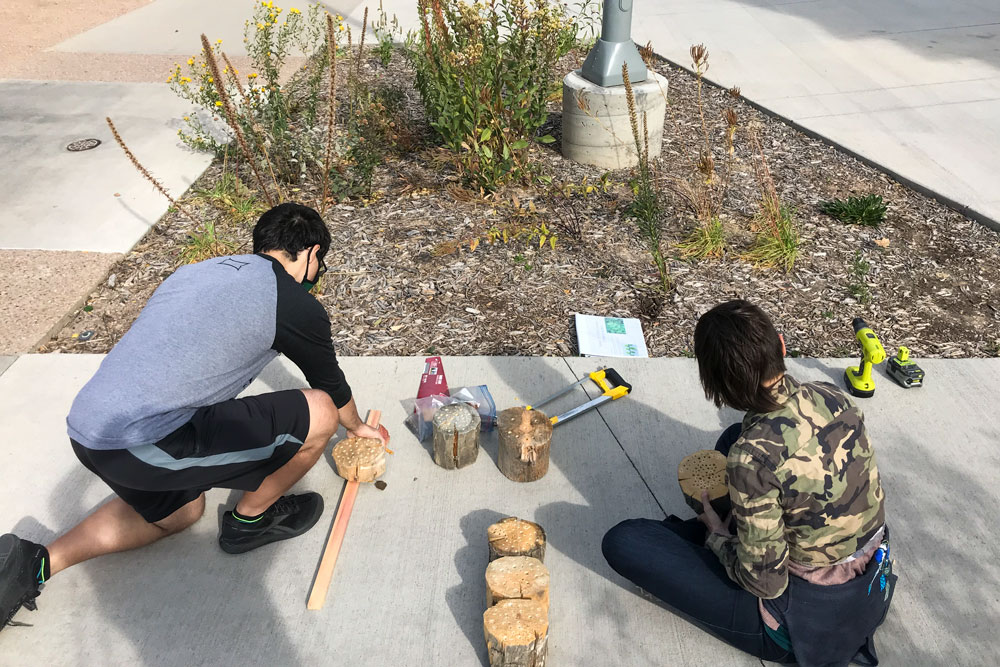
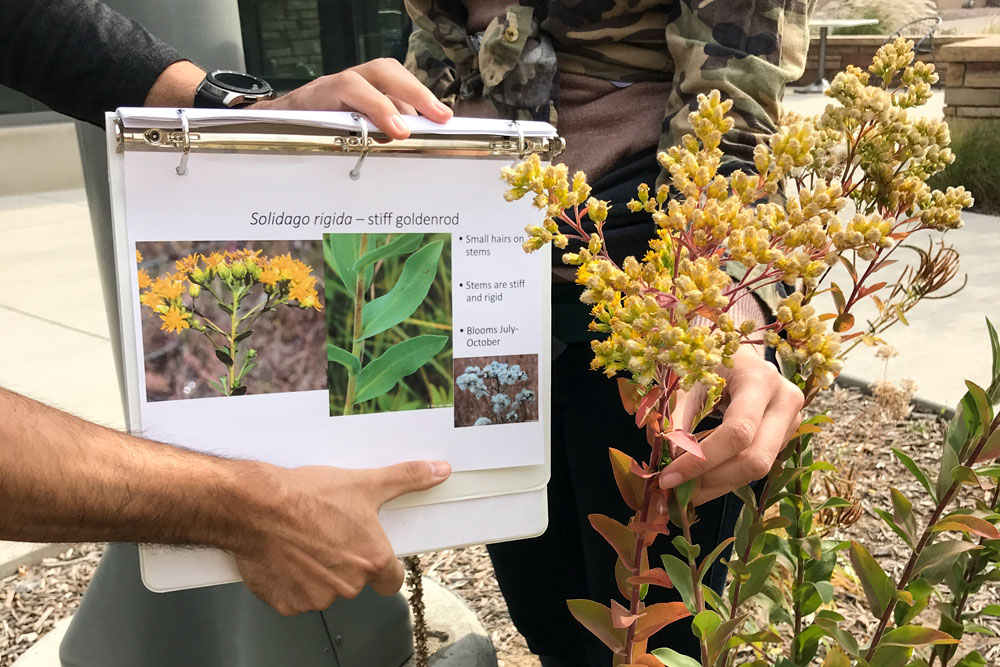
Simmons said the camaraderie she experienced earlier in the year with the group solidified that pursuing the MNRS degree with a concentration in ecological restoration was the right choice for her.
Ryan Lawrence said he felt the same way after learning about restoration work being done after Colorado’s September 2013 floods. He said the restoration field incorporates a combination of mental and physical work that requires a team effort and every effort counts, no matter what you are given to start with.
“However small, we are influencing the world in a positive way and trying to fix the mistakes we’ve made in the environment,” Lawrence said.